京の金属工芸品 京都金属工芸協同組合
KYO-KINZOKUKOUGEIMETAL CRAFTS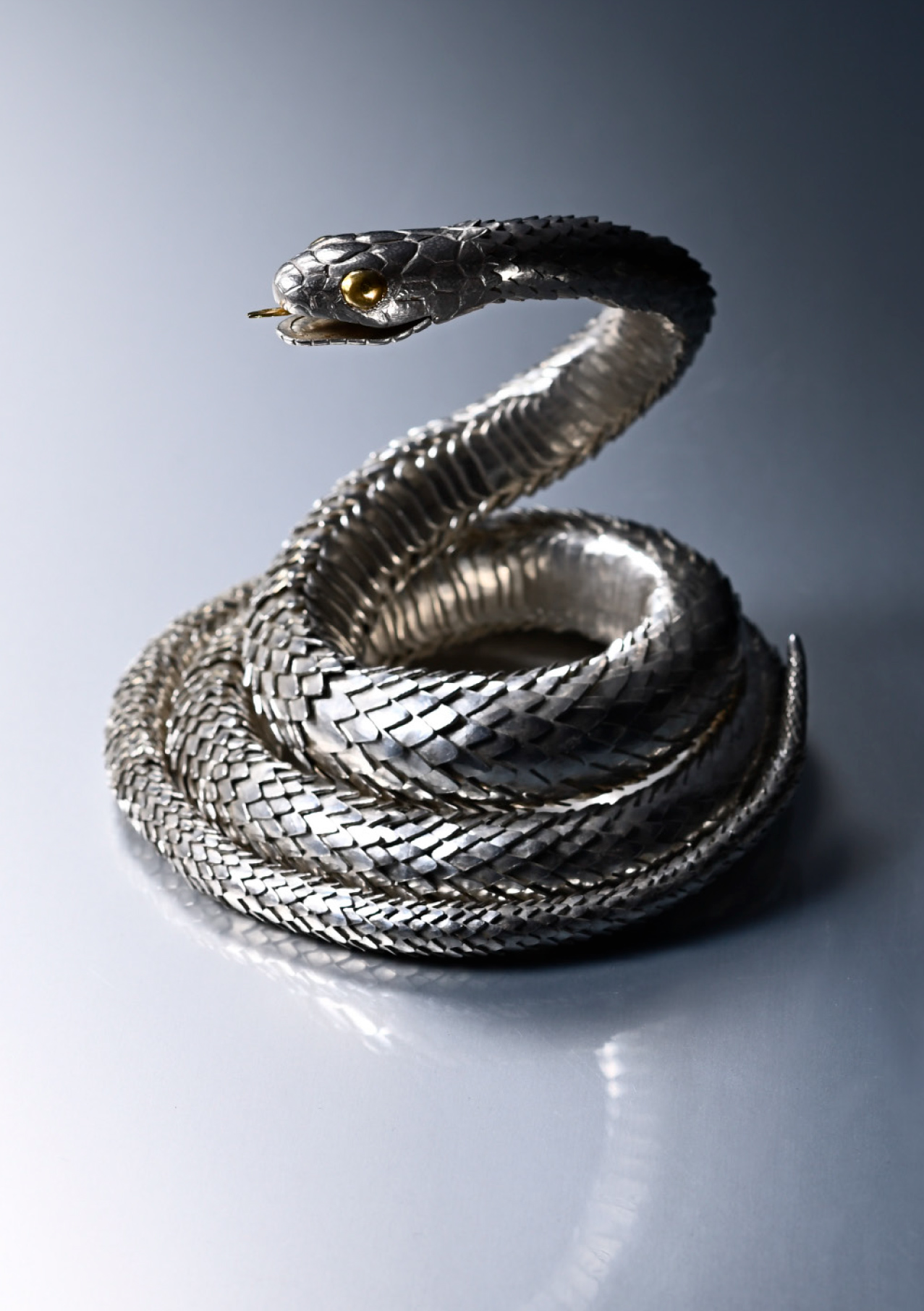 1
1
- 自在「白い蛇」。鱗を1枚ずつ精密に組み合わせているため、形が自由に変えられる。
金属工芸の技法は、型に流し込む鋳金、叩いて延ばしたりしぼったりする鍛金、模様を彫る彫金の3種類に大きく分類されます。これに金属象嵌、七宝なども加わります。金属加工品は飛鳥時代(6世紀)からすでに日本で使われ始め、奈良時代(8世紀)に仏教の隆盛とともに技術が発達、平安時代(8世紀末)に都が京都に移されると同時に金工師も移り住んだことから、以後、京都で発展しました。宮中の用度品、仏具、茶道具、そして武具や甲冑、刀剣などに用いられて装飾技術が洗練を極めると同時に、鍋釜などの日常的な道具も作られてきました。明治時代(19世紀)には、精密な細工の美しさからパリやウィーンの万国博覧会で高い評価を受けた“超絶技巧”へと発展し、その技術が今日まで受け継がれて日用品からアート、さらには高級腕時計の文字盤など、さまざまな分野で活用されています。
Metalworking techniques are roughly classified into three types: cast metal poured into molds, forged metal that is struck and extended or squeezed, and engraving patterns. Metal inlay (P.50), Cloisonné (P.78), and other techniques can also be included. Metalworking has been used in Japan since the Asuka period (6th century), and techniques developed along with the rise of Buddhism in the Nara period (8th century). The development continued in Kyoto after the capital moved there in the Heian period (end of the 8th century). The ornamental technique became highly refined in Kyoto through creations for the Imperial Palace, Buddhist paraphernalia, tea utensils, armor, swords as well as for daily items such as hot pots. In the Meiji era (19th century), the "transcendental technique" of metalworking evolved, which was highly praised at the World Expositions in Paris and Vienna for its precise workmanship and beauty. These techniques have been passed down and today are employed in various fields including everyday objects, artworks and even for the dials of luxury watches.
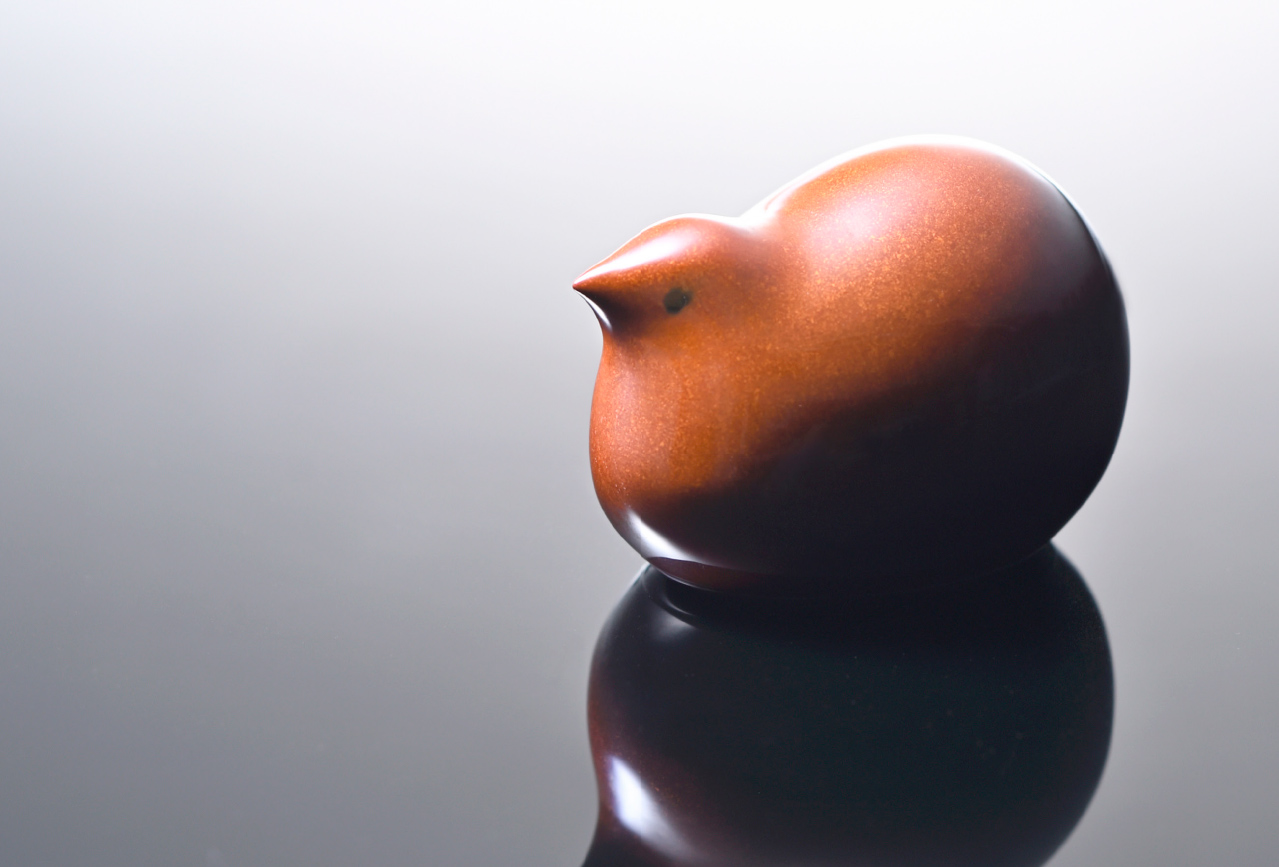 2
2
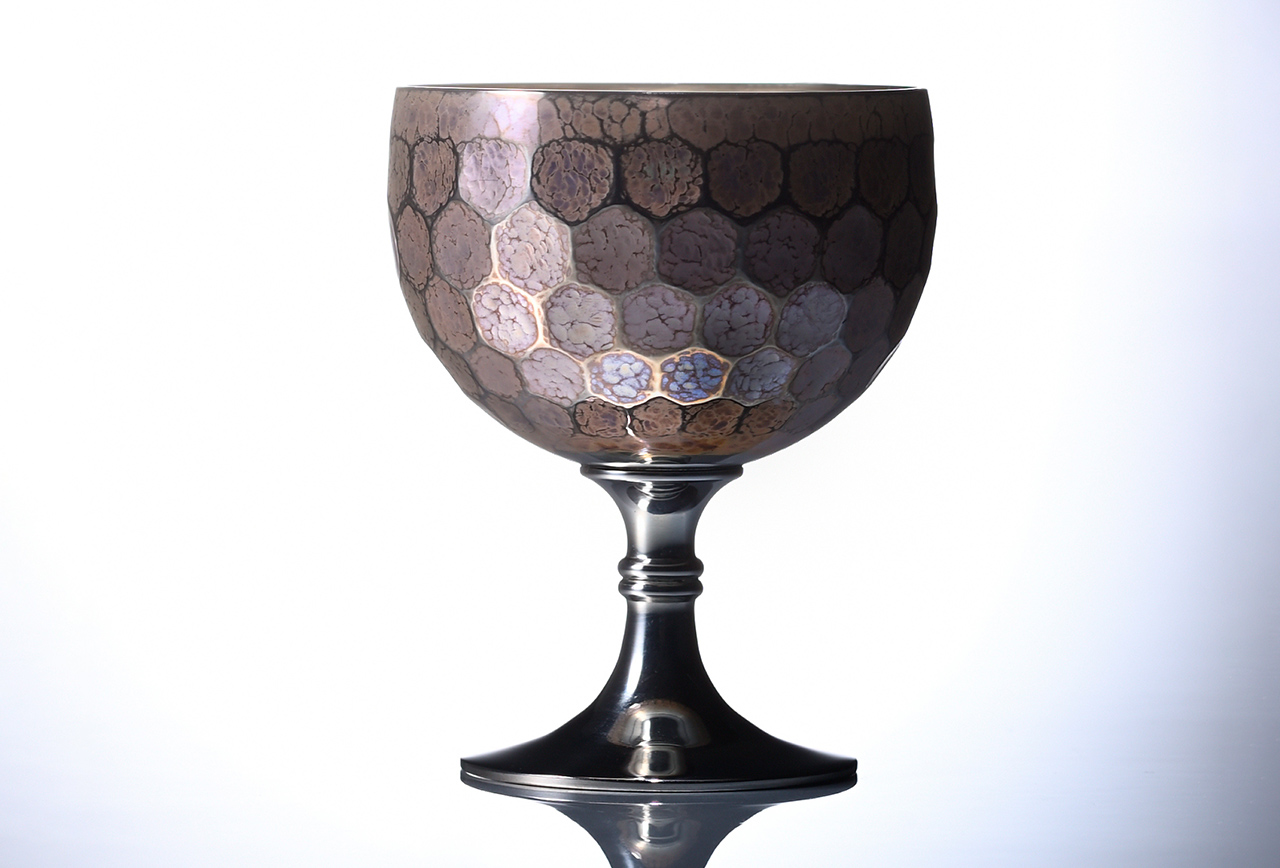 3
3
- : 香合「ぬくもり」。
- : 高杯。
(1,2,3 すべて金属工芸平安美芳 淺野昭夫)
1: Jizai Shiroi Hebi. The scales are precisely combined one by one, so the shape can be changed freely. 2: Incense box Nukumori. 3: Standing tray. (1,2,3 Heian Bihou Asano Akio)
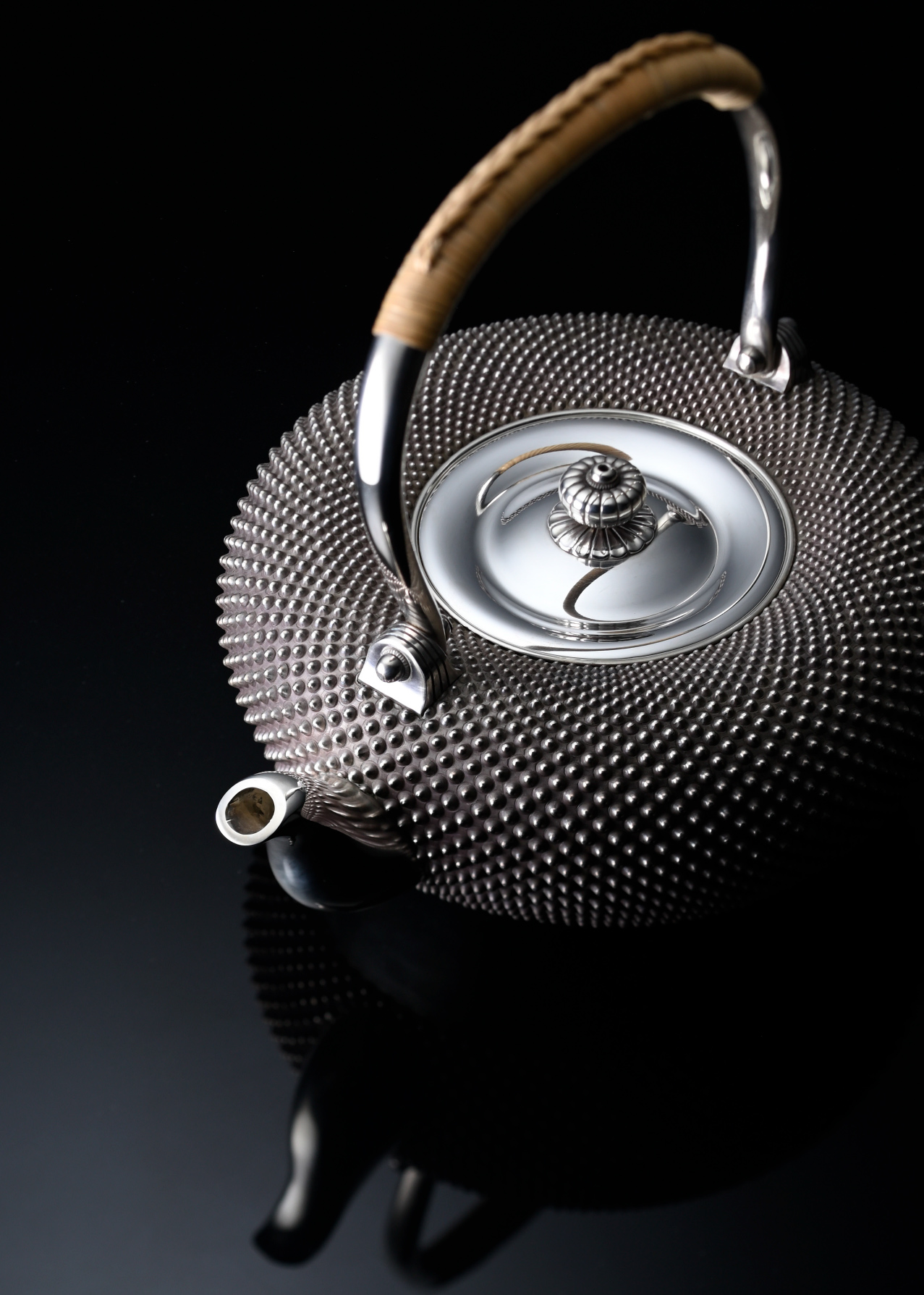 4
4
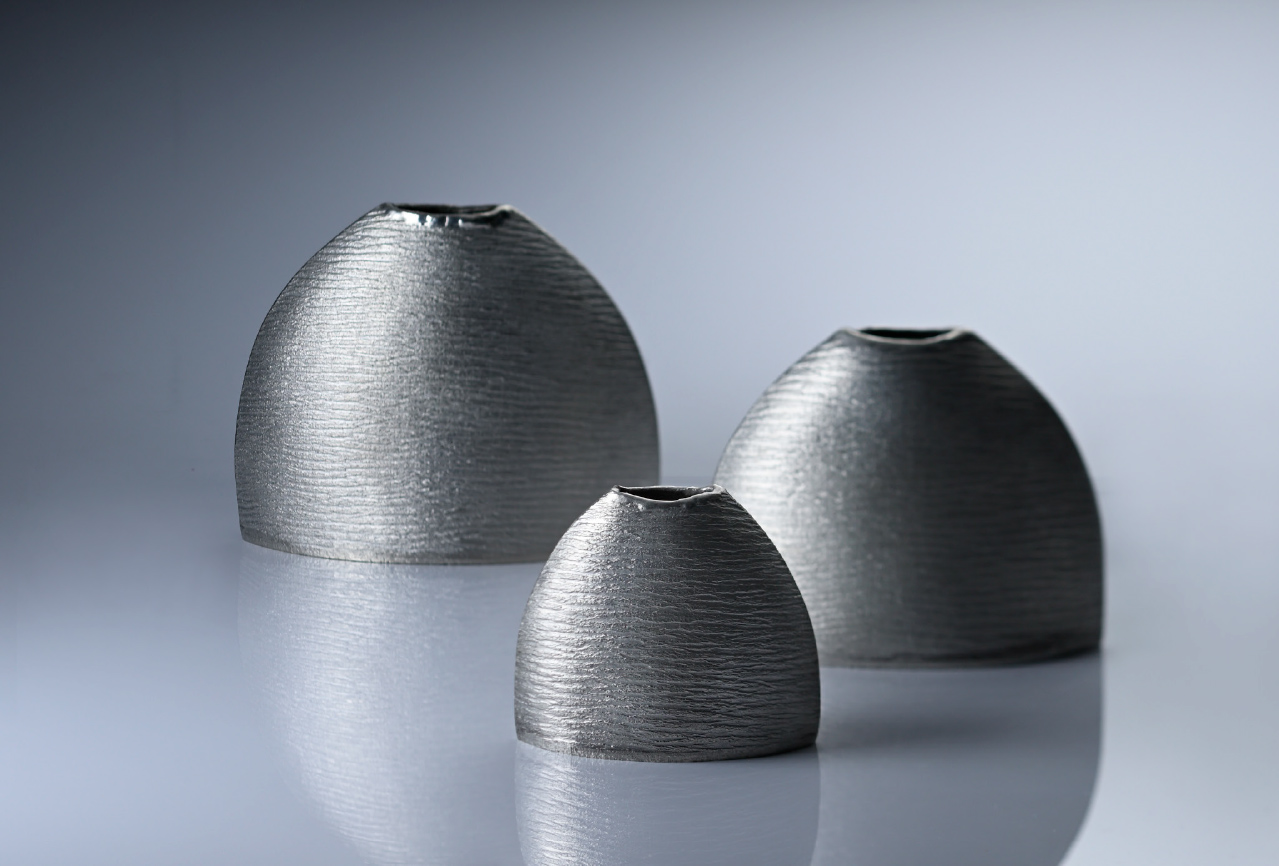 5
5
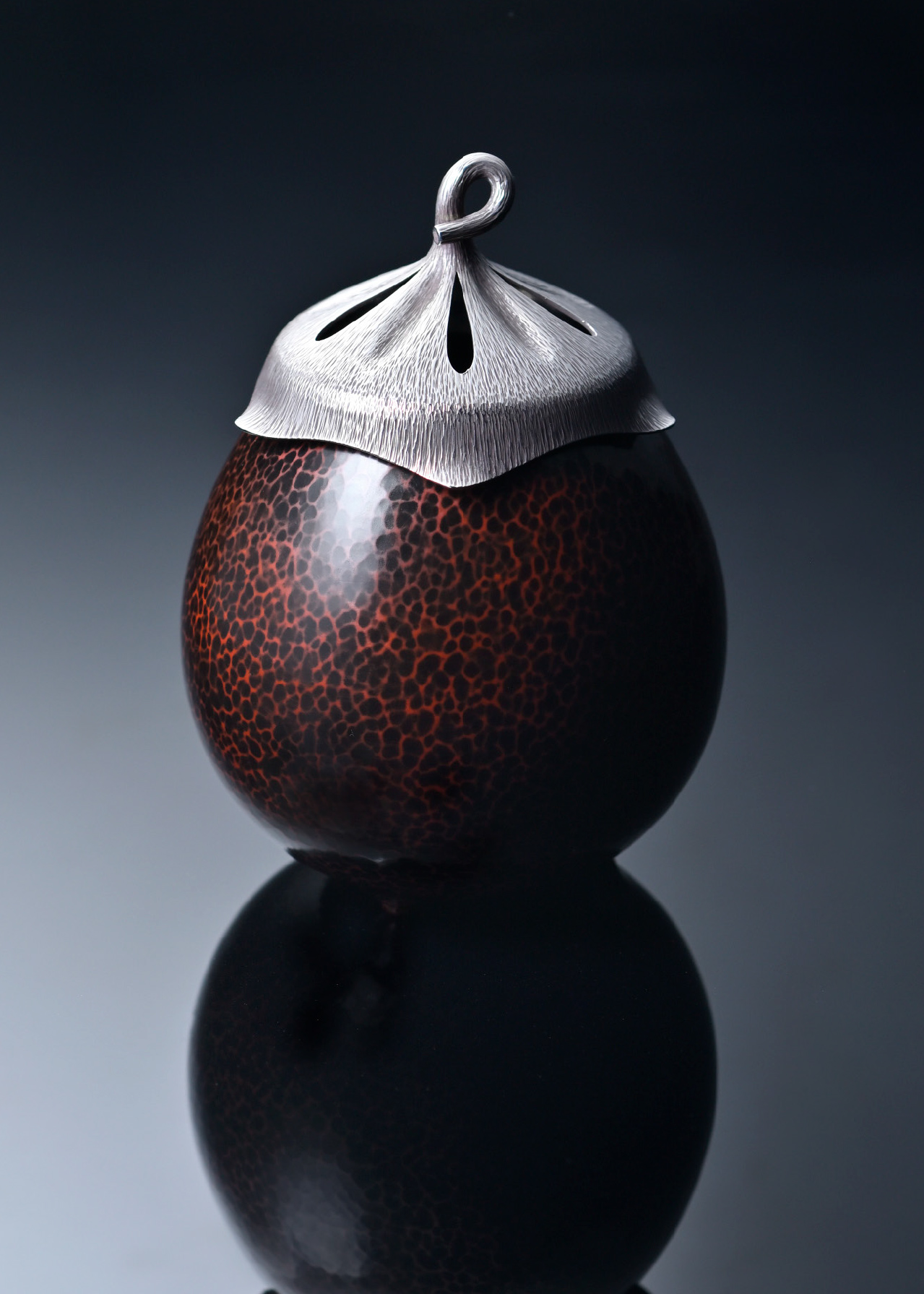 6
6
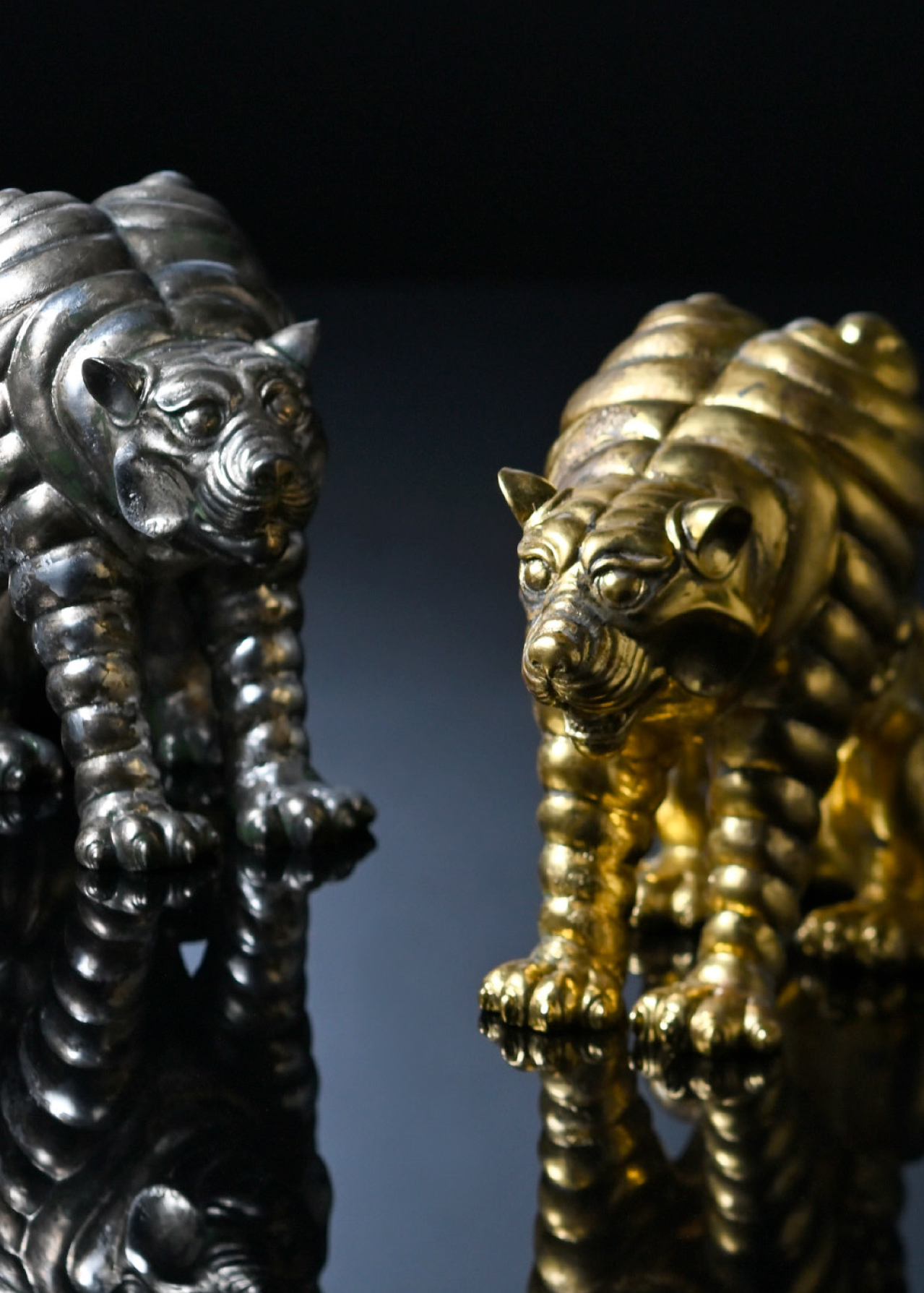 7
7
- : 純銀霰湯沸。
- : 花入「澪」(錫)。
- : 緋銅茄子形(南鐐火屋付)香炉 。
- : 青銅香炉「阿吽之虎」金箔(右)、銀箔(左) 。
(4,5,6,7 すべて清課堂)
4: Pure silver hail teapot. 5: Vase Mio (tin). 6: Incense burner in a scarlet copper eggplant shape with Nanryo cap. 7: Bronze incense burner Aun no Tora gold leaf (right), silver leaf (left). (4,5,6,7 Seikadō)

